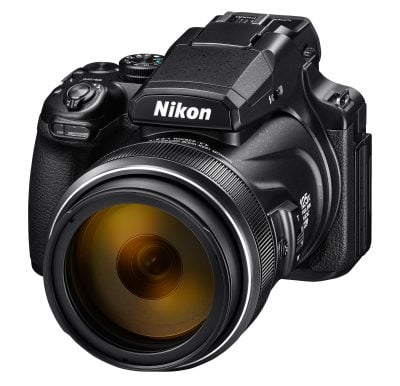Nikon COOLPIX P1000 review
-
-
Written by Ken McMahon
Intro
The Nikon COOLPIX P1000 is a DSLR-styled super-zoom camera with a massive 125x range, taking it from an equivalent of 24-3000mm. Announced in July 2018, the P1000 boasts the World’s longest optical zoom range, taking you from wide-angle to extreme telephoto that’s long enough to actually begin to crop-into the Moon.
The 125x lens has a maximum aperture of f2.8-8 and an impressive closest focusing distance of just 1cm at the wide-end when set to Macro mode. The image is kept steady by optical stabilisation in the lens, complemented by optional electronic stabilisation when filming video if desired. In order to accommodate a lens of this extreme range, the P1000 employs a relatively small 1/2.3in CMOS sensor, although at least Nikon’s kept the resolution to a sensible 16 Megapixels and it’s possible to shoot in RAW too. The P1000 can film 4k video at 25 or 30p, as well as 1080 at 25-60p. Focusing is contrast-based only.
The combination of a small sensor and a maximum aperture of f8 at the long-end means the P1000 is unlikely to win any quality awards in low light, and the contrast-based AF means it may struggle with fast action too, but there’s literally nothing else which can come close to this range.
In my review I’ve detailed all of the P1000’s features and looked at how it measures up against its closest competitors including the Canon PowerShot SX70 HS, Nikon’s own COOLPIX P900 and the Panasonic Lumix FZ80 / FZ82. I’ve also looked at the very particular handling characteristics of a camera with a 3000mm lens. So read on to discover if the Nikon COOLPIX P1000 is the super-zoom you’ve been waiting for!
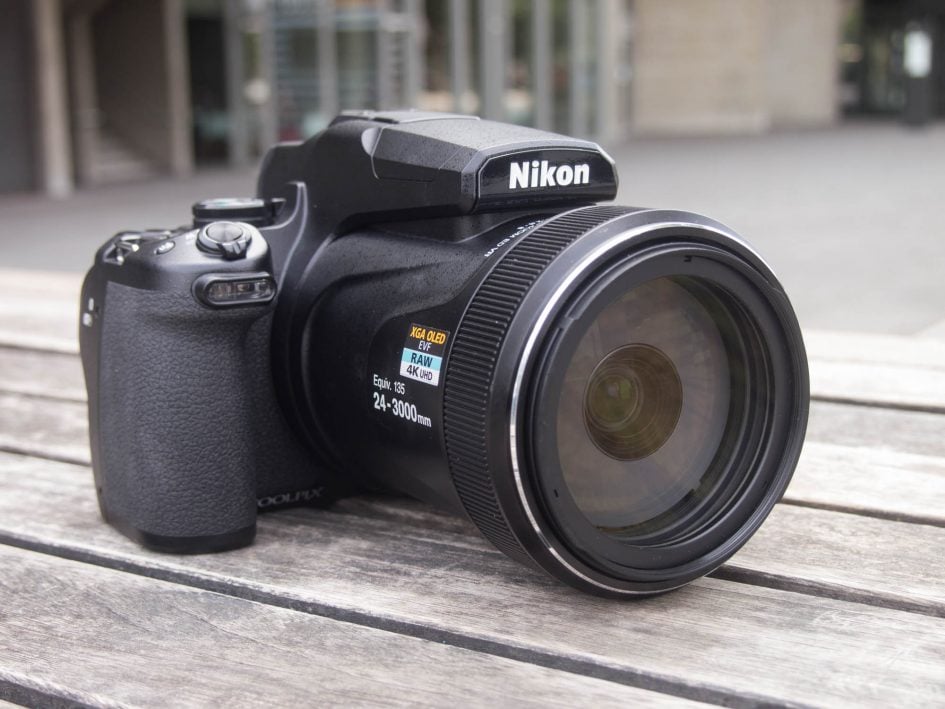
The first thing that strikes you when you take the COOLPIX P1000 out of the box is its size – by comparison with other super-zooms, it’s huge. Of course, very few super-zooms even come close to its 125x range, so perhaps that’s not surprising. The COOLPIX P1000 measures 146x119x181mm and weighs 1415g (3lb 2oz). To put that in context, the 83x Nikon COOLPIX P900, no lightweight itself, measures 140x103x137mm and weighs 899g. So the COOLPIX P1000 is bigger all round, but most noticeably it’s heavier, taller and has a significantly longer lens barrel.
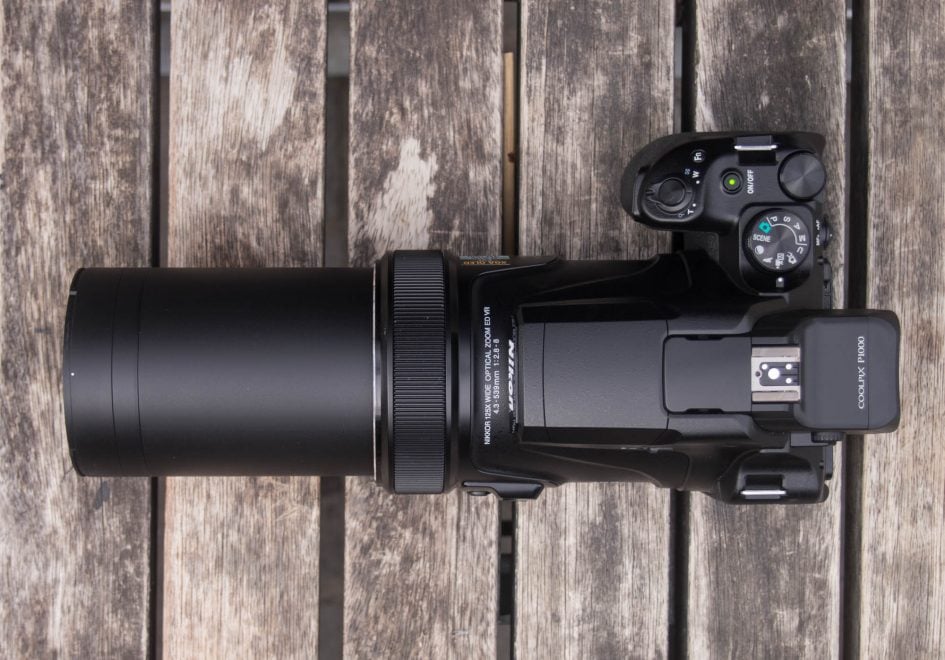
Design-wise, the COOLPIX P1000 has a lot in common with the earlier P900. Here on the top panel the mode dial is joined by a thumb operated control dial, the on/off button, a programmable function button and the shutter release with a zoom collar, there’s a second zoom rocker on the left of the lens barrel. The pop-up flash sits well forward on the ‘hump’ and there’s also a hotshoe for an external flash and accessories. Note the lens has a control ring for manual focussing that can also be assigned to one of four functions when in AF mode (though it can’t be used to zoom).
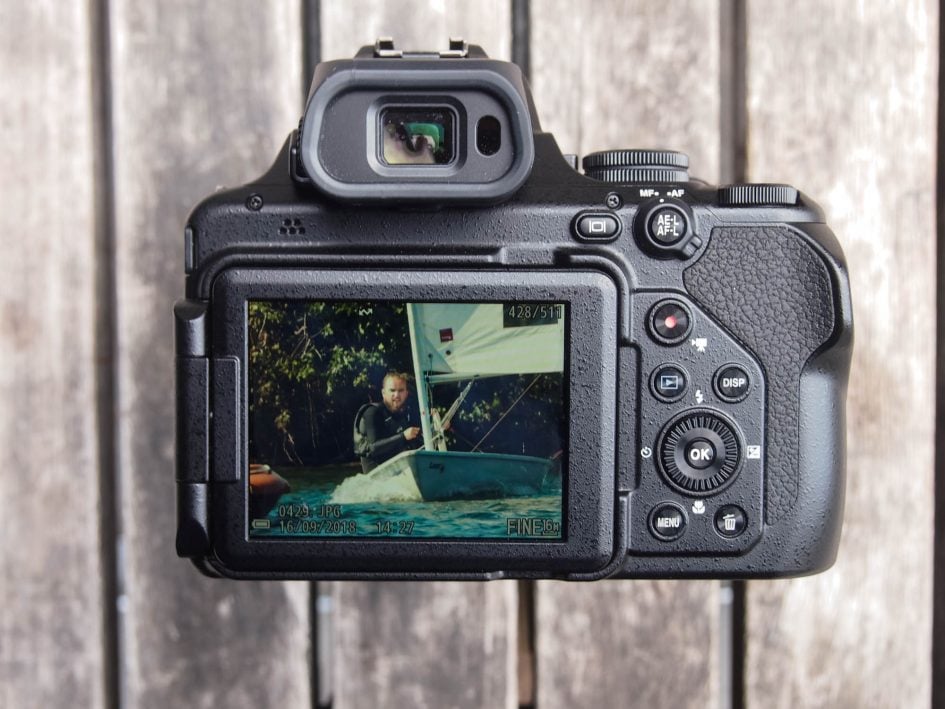
The COOLPIX P1000’s 3.2 inch 921k dot OLED screen is nice and big and useful for menu settings and general shooting. It’s side hinged, so can be angled in any direction including forwards to face you. It’s similar in this respect to the COOLPIX P900 and the Canon PowerShot SX70 HS. If you like a touch-screen the Panasonic Lumix FZ80 / FZ82 fits the bill, but is fixed in position.
The P1000 also has an electronic viewfinder. And it’s a pretty good one, with a 0.39 inch 2359k dot OLED panel providing a reasonably large, bright and stable view. At least when you’re framing a stationary subject. When panning, the the viewfinder became a little uncomfortable to look at, for me at least. I’m not sure if it’s a slight lag, or some other artefact, and these things are often subjective, so don’t just take my word for it – try and get a look yourself before buying if you think it might bother you. There’s a sensor which automatically toggles to the EVF when you put your eye to it and also a dedicated button to switch in on permanently. You can also switch the sensor off to avoid it switching to the EVF when something that’s not your eye gets too close, for example when you’re shooting at waist level.
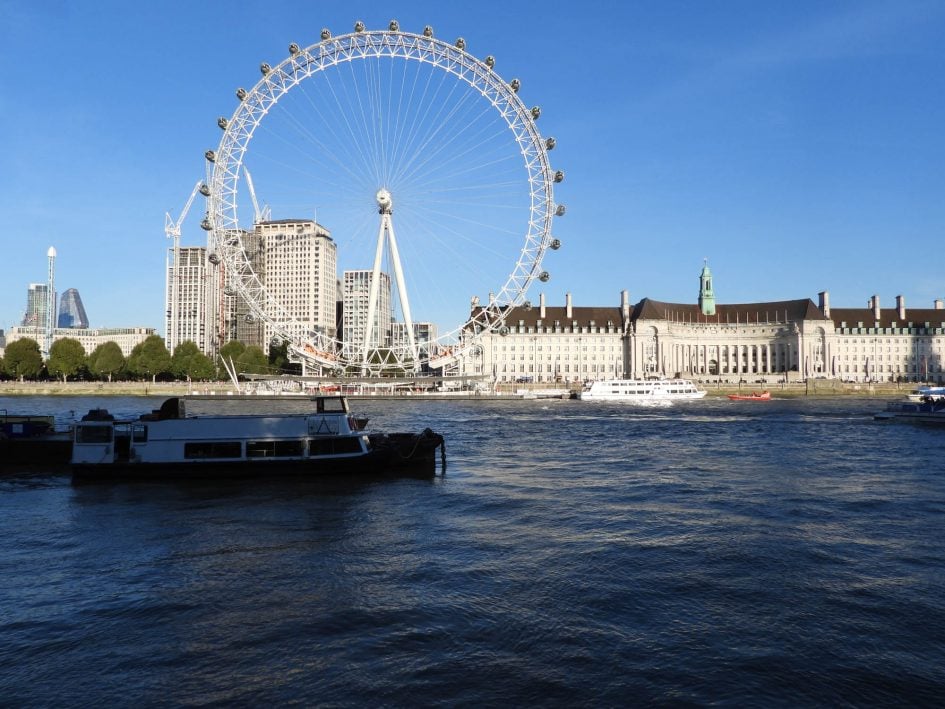
Here’s the COOLPIX P1000 at its maximum 24mm equivalent wide angle focal length. At this setting the lens performs well and with a reasonably bright f2.8 maximum aperture you’ll have little problem shooting in low light. Generally, super-zooms with long ranges don’t have bright lenses and the longer the zoom, the smaller the maximum aperture will be when the lens is zoomed all the way in. So, although the P1000 starts out at a respectable f2.8, at 2800mm and beyond it’s f8 all the way.
If you compare that with the Canon PowerShot SX70 HS (f3.4-6.5), the Lumix FZ80 / FZ82 (f2.8-5.9) and the COOLPIX P900 ( f2.8-6.5) you’ll see that, with the exception of the SX70 HS, they all have the same f2.8 maximum aperture at the wide angle setting. The P1000’s f8 when zoomed in is smaller than the others because it zooms further, at 1500mm the P1000’s maximum aperture is f5.6 and at 2000mm f6.3. So it’s actually the brightest of all three models at their maximum zoom focal lengths.
Here’s a list of the focal lengths at which the P1000’s maximum aperture closes by a third of a stop:
30mm: f3.2
55mm: f3.5
105mm: f4
185mm: f4.5
370mm: f5
750mm: f5.6
1600mm: f6.3
2200mm: f7.1
2800mm: f8

And here’s what you get when you zoom the COOLPIX P1000 all the way in to its maximum 3000mm equivalent focal length. This is truly an awesome zoom range to have at your disposal and something you can’t do with any other superzoom currently on the market. But before you get too excited, think about what you might want to do with all that zoom power at your fingertips. I’ve included a few examples below with comments on how the P1000 handles for wildlife and sports photography. For now, just be aware that when zoomed all the way in, the P1000’s aperture is fixed at f8, which means that, other than in bright conditions, to avoid camera shake you’ll need to increase the ISO sensitivity to maintain a fast shutter speed.
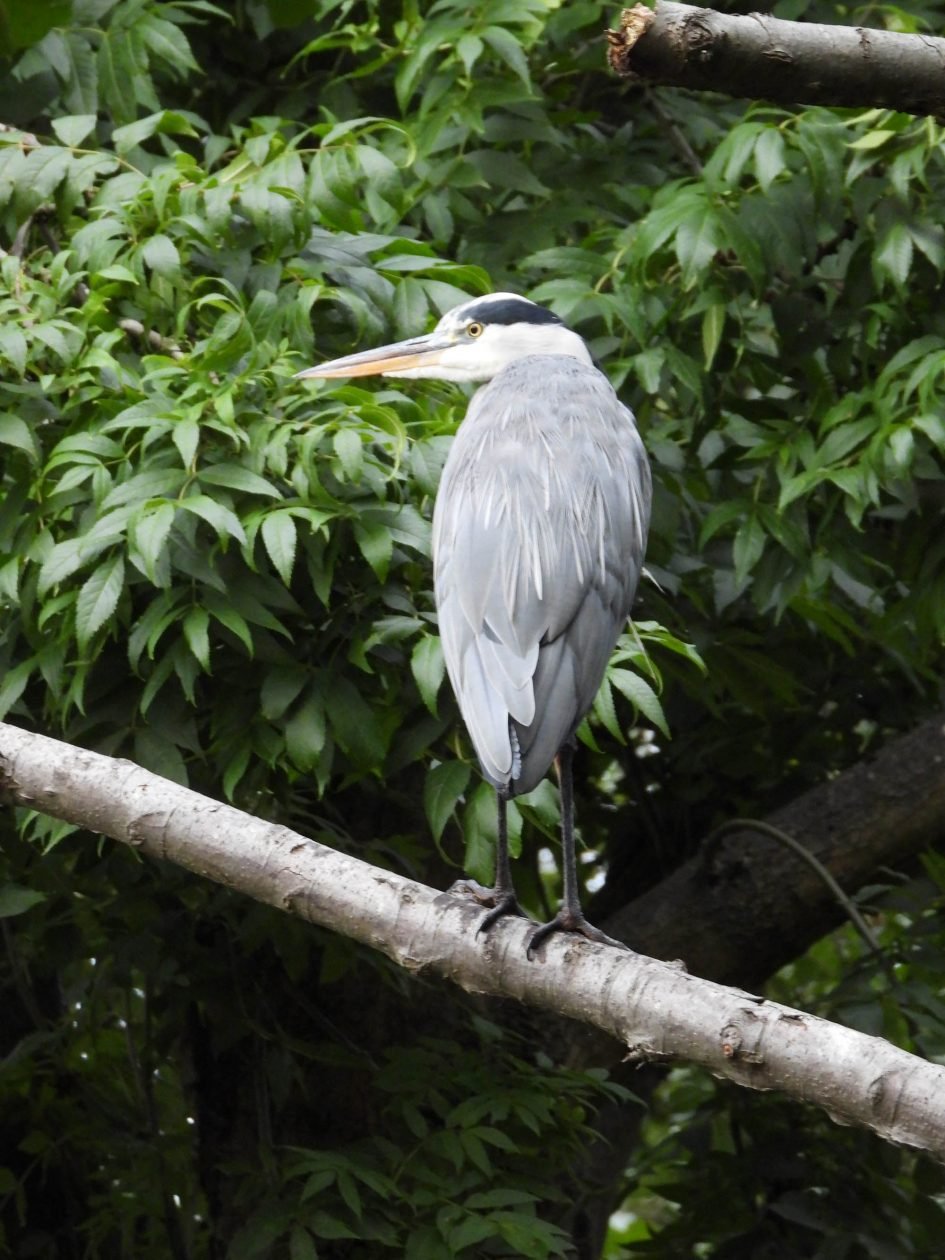
This heron was about 10 metres up a tree that I was standing around 20 metres away from. It’s a big bird and it wasn’t vastly distant, so for this shot I only zoomed to 750mm – a feat most super-zooms in this class can manage easily. At this focal length, hand-held and with the stabilisation enabled, it was reasonably easy to hold the camera steady enough to frame the shot .
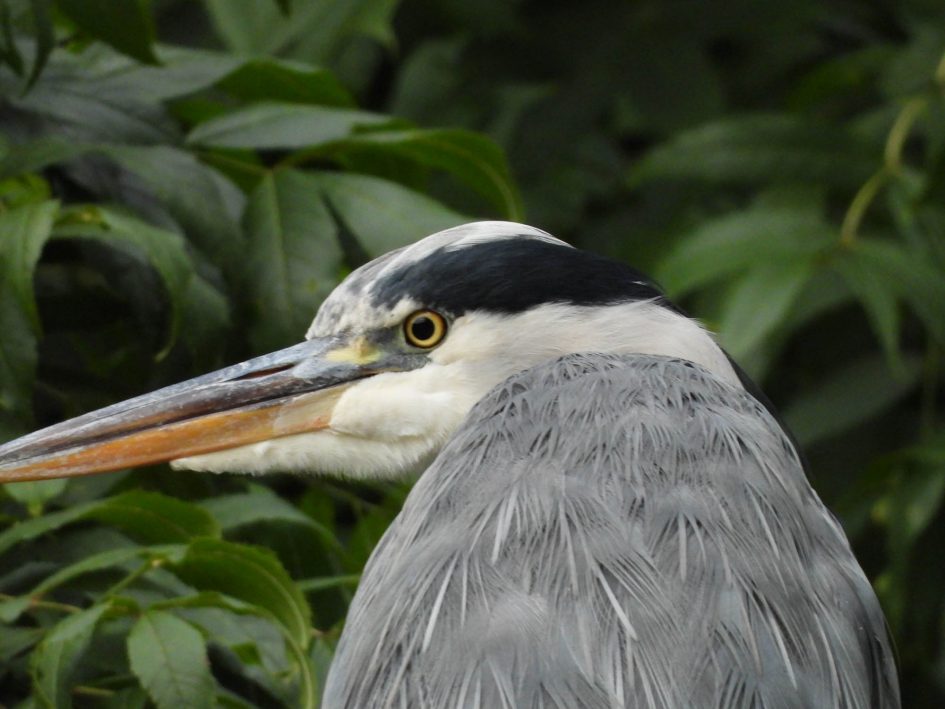
Here I’ve zoomed all the way in to capture a tighter crop of the head and upper body of the heron. Even with the stabilisation on, it’s very difficult to hold the P1000 steady enough at 3000mm to accurately frame a shot of a stationery subject. The stabilisation helps, particularly if you set ‘framing first’ mode, which minimises movement at the instant you press the shutter release, but I still ended up with a lot of poorly framed shots at the long end of the zoom upwards of 2000mm.
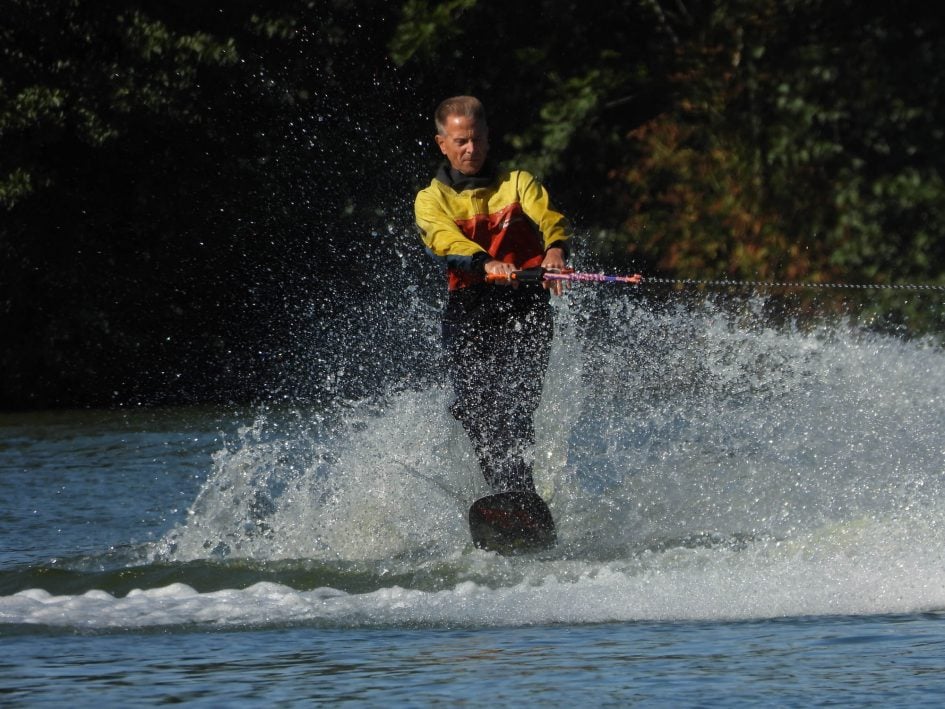
If capturing stationery subjects at 3000mm is a challenge, moving subjects present a whole new world of difficulty. Some challenges can be overcome by planning and technique; for example shooting these wake-boarders I attempted to position myself so the boat travelled towards me, rather than across my field of view. Even so, with a fast moving subject like this it’s difficult to keep the action in the frame, even at focal lengths well short of the P1000’s 3000mm maximum. For capturing action the COOLPIX P1000 can shoot shoot a 7-frame burst at 7fps, but the focus is fixed on the first frame and it takes several seconds to write images to card and while that’s happening the camera locks up – you can’t even adjust the zoom to frame up for the next burst. So you need to pick your moment carefully.
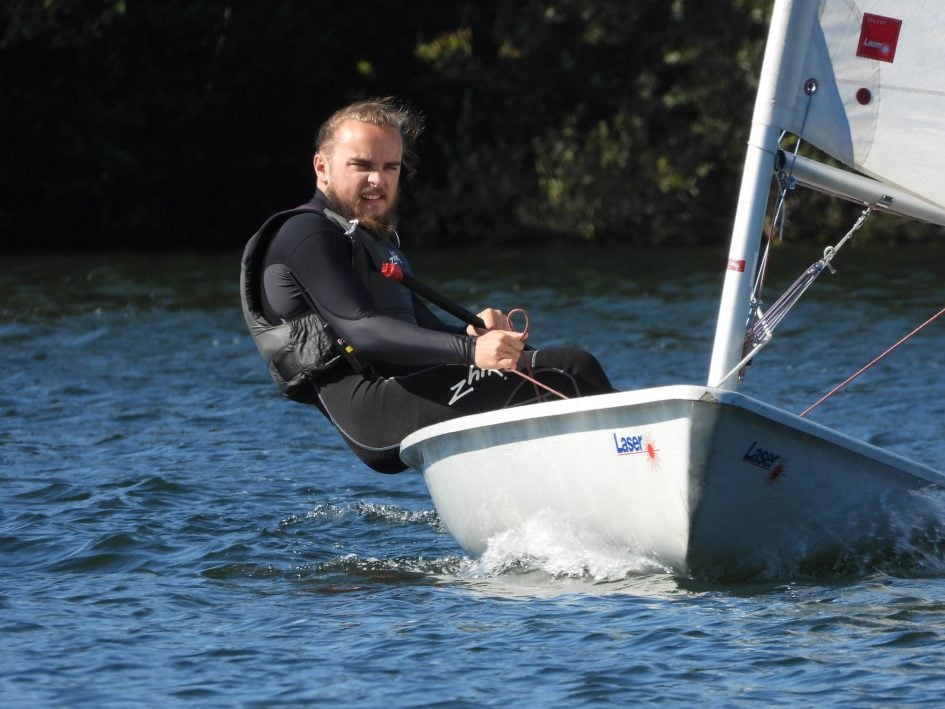
With slower moving targets like sailing dinghies it’s a little easier to keep the subject in the frame. Even so you’ll find things much easier – and get more keepers – if you use a monopod. The P1000 has a snap-back zoom button on the left side of the lens barrel which temporarily zooms out so you can locate your subject – perfect for this sort of thing. For this shot I rested the P1000’s lens barrel on a park bench. The Autofocus works quickly and accurately in bright conditions like these, even when the lens is zoomed all the way in.
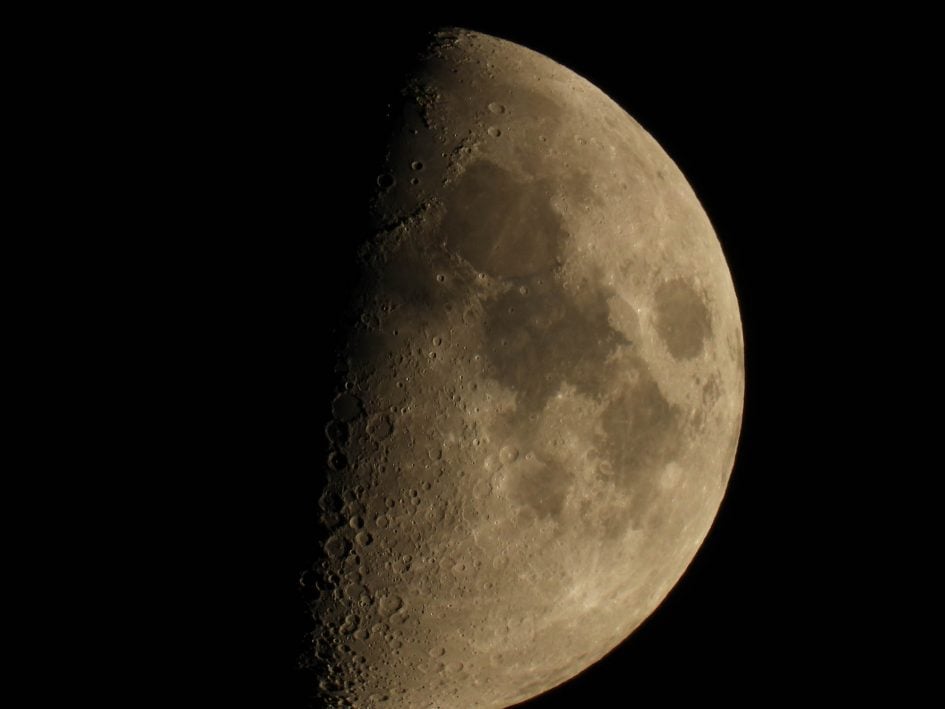
If ever a camera was built for taking moon shots, it’s the Nikon COOLPIX P1000. Zoomed all the way in you can actually crop the poles. You’ll need a tripod though, even with the stabilisation enabled, there’s no way you’ll be able to hold the camera steady enough to properly frame your shot. And as usual when shooting the moon, if you’re not using manual exposure you’ll need to set the exposure compensation to around -1EV to avoid over-exposure.

The P1000 can focus as close as 1cm in Macro AF mode – the rope in this shot is actually touching the front lens element. It’s a neat trick, and it’s great to be able to capture close up subjects like this just as easily as distant ones, but the P1000 isn’t the only super-zoom that can do close capture. The Canon PowerShot SX70 HS can focus at 0cm and both the Lumix FZ80 / FZ82 and the COOLPIX P900 can focus at 1cm.
For this clip I set the COOLPIX P1000 to its 1080 / 50p video mode and enabled the optical stabilisation, but not the electronic VR. The stabilisation does a very good job of keeping things steady though, not surprisingly it struggles at the full 3000mm extent of the zoom. You can see a 4k version of this clip on Vimeo here Note that the P1000 uses the same sensor area for 4k video as for 1080p and scales it, so the angle of view and coverage is exactly the same.
Again in 1080 / 50p mode, and this time with the stabilisation turned off, I mounted the COOLPIX P1000 on a tripod for this panning shot. The P1000 handles the light changes very well, gradually changing the exposure to compensate for the brighter conditions when I pan out from under the bridge. The zoom operates at two speeds and this is the slower one. Notice how, even on a reasonable sturdy tripod, the slightest touch (or even a light breeze) on the camera results in quite severe tremors when zoomed right in. So even on a tripod, it might be a good idea to enable the stabilisation, at least for video. You can see a 4k version of this clip on Vimeo here
Here’s the COOLPIX P1000 in action in a low light situation. Initially, the exposure is influenced by the bright background, but as I pan around the P1000 compensates very smoothly, it also handles the white balance well – the exterior doesn’t look too blue and the interior isn’t too warm. The overall quality of this 1080p clip is good and there’s no visible noise. You can see a 4k version of this clip on Vimeo here
Finally, here’s a clip showing the moon travelling across the frame due to the earth’s rotation. For this clip I set the P1000’s mode dial to the Movie Manual position and selected fully manual exposure. I also set the focus to manual and used peaking to ensure the moon was sharp. You can see a 4k version of this clip on Vimeo here
Check prices on the Nikon COOLPIX P1000 at Amazon, B&H, Adorama, or Wex. Alternatively get yourself a copy of my In Camera book or treat me to a coffee! Thanks!
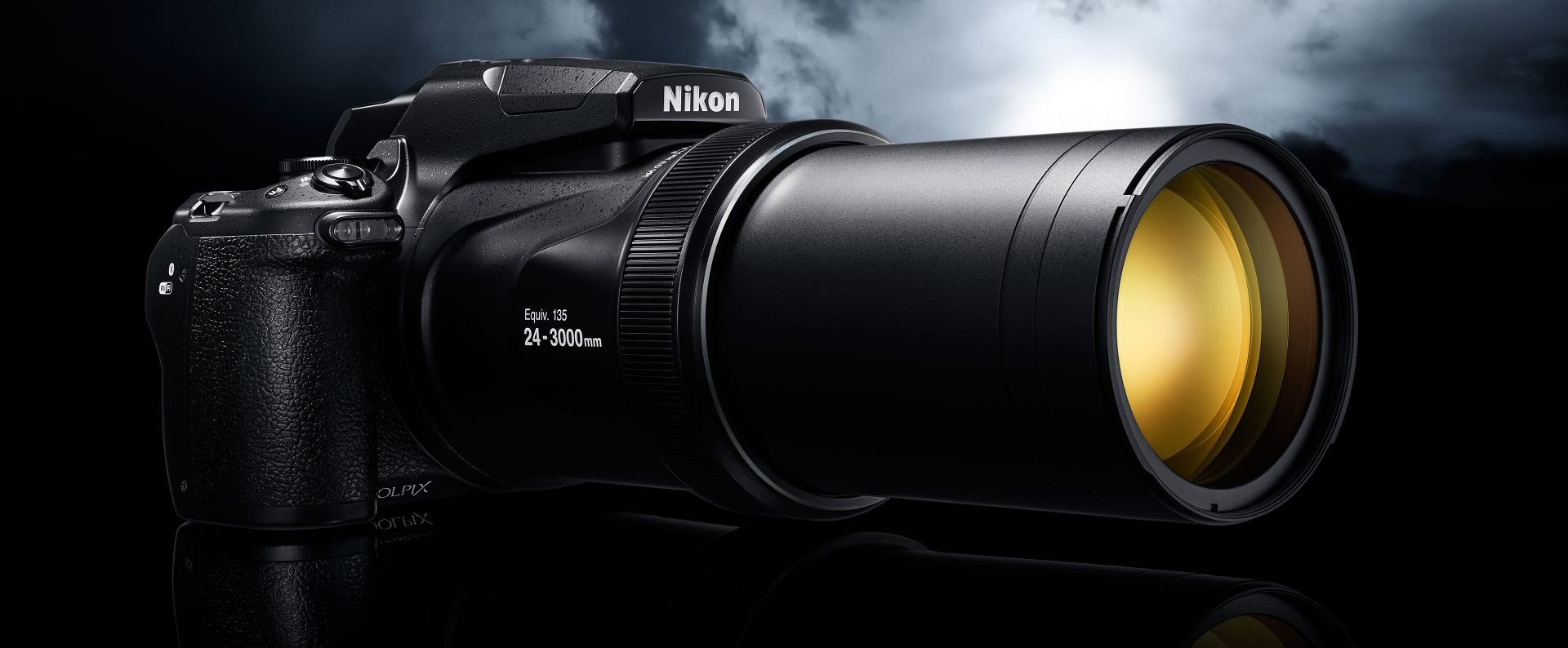
 The Nikon COOLPIX P1000 is undeniably the king of super-zooms. Its awesome 125x reach, extending from a 24mm wide angle to an eye-watering 3000mm, is unmatched and deserving of a new mega-zoom classification all of its own. Beyond the zoom it has more to offer, including a big bright viewfinder, a big articulated screen, Raw shooting, 4K filming, an external mic socket, in-camera battery charging and Wifi with Bluetooth. Its continuous shooting performance is a little lacklustre, so for sports and action photography it's not the best choice. And when zoomed in to 3000mm the f8 maximum aperture means shooting at higher ISOs unless the sun is shining. Even then, you'll either need very steady hands or some other support, such as a monopod, to stabilise the camera and keep your subject centred in the frame. Despite those reservations, the COOLPIX P1000 is a lot of fun. It allows you to capture shots that would literally be beyond the scope of any other SLR-styled super-zoom on the market. If you're into wildlife or sports, or you just like taking pictures of far off, inaccessible subjects, there really is nothing to beat the COOLPIX P1000. But if you're happy with a slightly shorter, more manageable zoom range, the COOLPIX P900, Canon PowerShot SX70 HS and Panasonic Lumix FZ80 / FZ82, all have plenty to offer at a fraction of the price.
The Nikon COOLPIX P1000 is undeniably the king of super-zooms. Its awesome 125x reach, extending from a 24mm wide angle to an eye-watering 3000mm, is unmatched and deserving of a new mega-zoom classification all of its own. Beyond the zoom it has more to offer, including a big bright viewfinder, a big articulated screen, Raw shooting, 4K filming, an external mic socket, in-camera battery charging and Wifi with Bluetooth. Its continuous shooting performance is a little lacklustre, so for sports and action photography it's not the best choice. And when zoomed in to 3000mm the f8 maximum aperture means shooting at higher ISOs unless the sun is shining. Even then, you'll either need very steady hands or some other support, such as a monopod, to stabilise the camera and keep your subject centred in the frame. Despite those reservations, the COOLPIX P1000 is a lot of fun. It allows you to capture shots that would literally be beyond the scope of any other SLR-styled super-zoom on the market. If you're into wildlife or sports, or you just like taking pictures of far off, inaccessible subjects, there really is nothing to beat the COOLPIX P1000. But if you're happy with a slightly shorter, more manageable zoom range, the COOLPIX P900, Canon PowerShot SX70 HS and Panasonic Lumix FZ80 / FZ82, all have plenty to offer at a fraction of the price.



